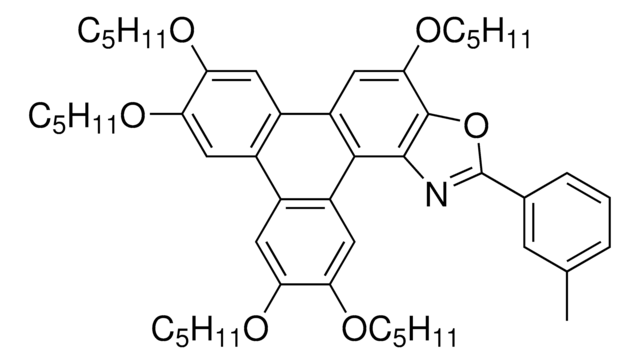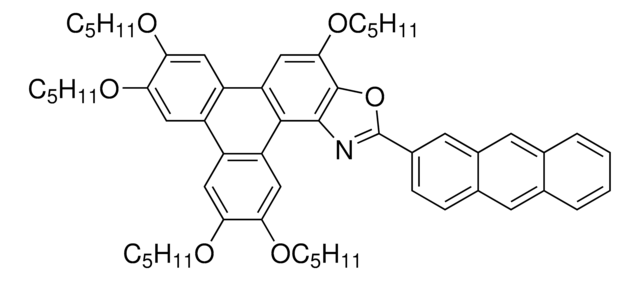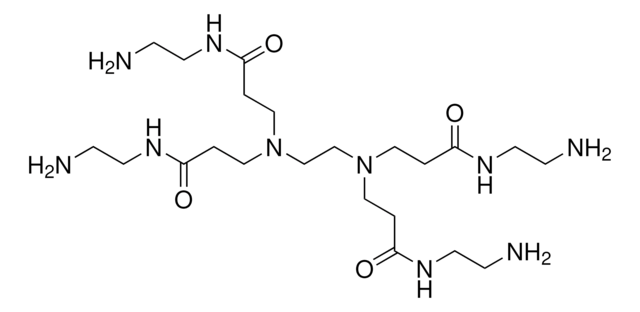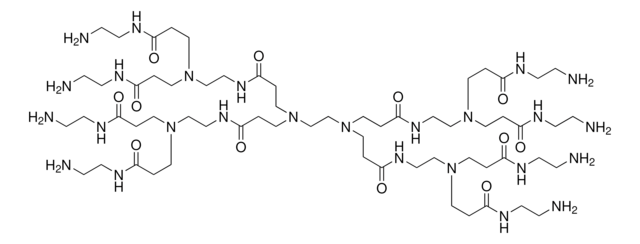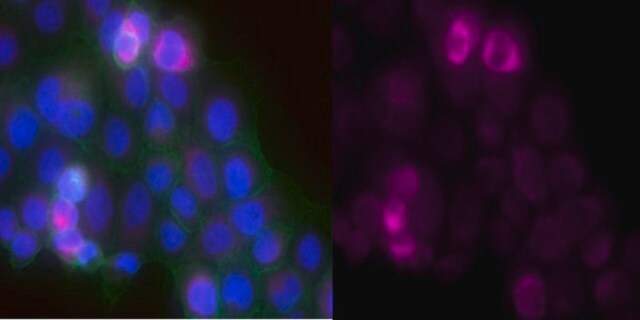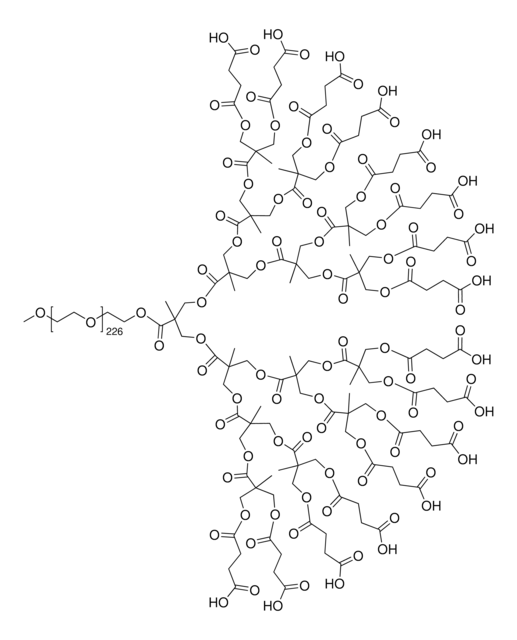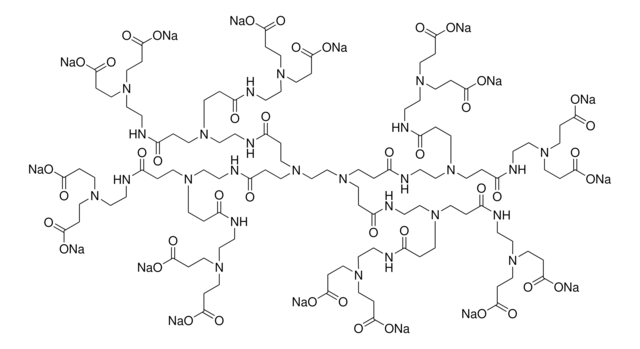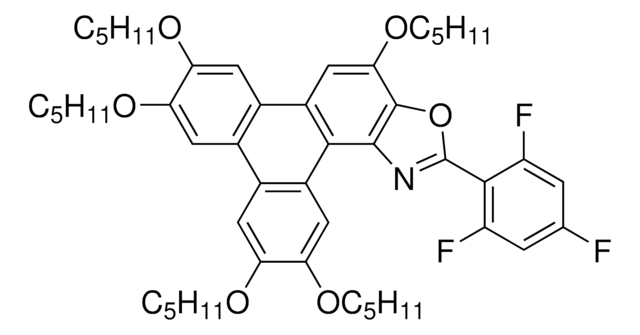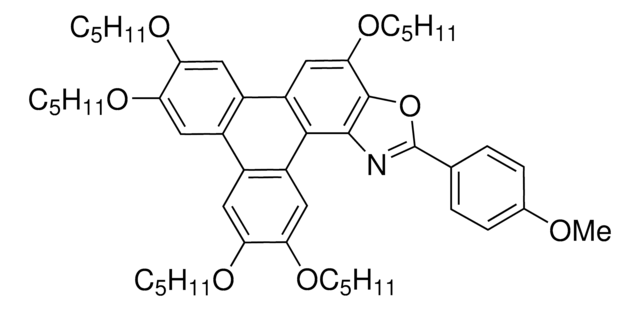922986
TpOx-1-Nap
Synonym(s):
8-(Naphthalen-1-yl)-2,3,6,11,12-pentakis(pentyloxy)triphenyleno[1,2-d]oxazole
About This Item
Recommended Products
band gap
2.94 eV, Optical, Solution state
Quality Level
solubility
soluble (THF > 1 mg /mL, MeCN < 0.24 mg / mL, DCM > 1 mg /mL)
λmax
117,000 M-1cm-1 at 275 nm in ethyl acetate
fluorescence
λem 510 nm, quantum yield 0.48 (pSS = 235 nm, Fluorescence Lifetime (ns) = 6.01)
Orbital energy
HOMO -5.45 eV (CV)
LUMO -2.51 eV (CV)
storage temp.
−20°C
General description
Thermal degradation onset = ∼380 °C
Phase transition temperature:
- Heating: Crys - Colh – 86 °C, Colh - Iso – 168 °C
- Cooling: Iso - Colh – 161 °C, Colh - Crys – 43 °C
Application
- Fluorescent dye staining
- Organic semiconductor for organic electronic and photonic applications
- Multi-photon microscopy
Storage and Stability
Storage Class Code
11 - Combustible Solids
WGK
WGK 3
Choose from one of the most recent versions:
Certificates of Analysis (COA)
It looks like we've run into a problem, but you can still download Certificates of Analysis from our Documents section.
If you need assistance, please contact Customer Support.
Already Own This Product?
Find documentation for the products that you have recently purchased in the Document Library.
Articles
Here we introduce the Triphenoxazoles, a new class of organic electron donor-acceptor materials that can both be manipulated to change the electronic properties of the donor and acceptor with the consequent modulation of their HOMO/LUMO and properties, such as Stokes shift and (photo)conductivity, whilst at the same time displaying liquid crystallinity and functional groups for further chemical modification.
Photovoltaic materials convert light into energy such as electricity. In contrast, display technology converts energy into visible light. A variety of display technologies and devices are reviewed.
Our team of scientists has experience in all areas of research including Life Science, Material Science, Chemical Synthesis, Chromatography, Analytical and many others.
Contact Technical Service